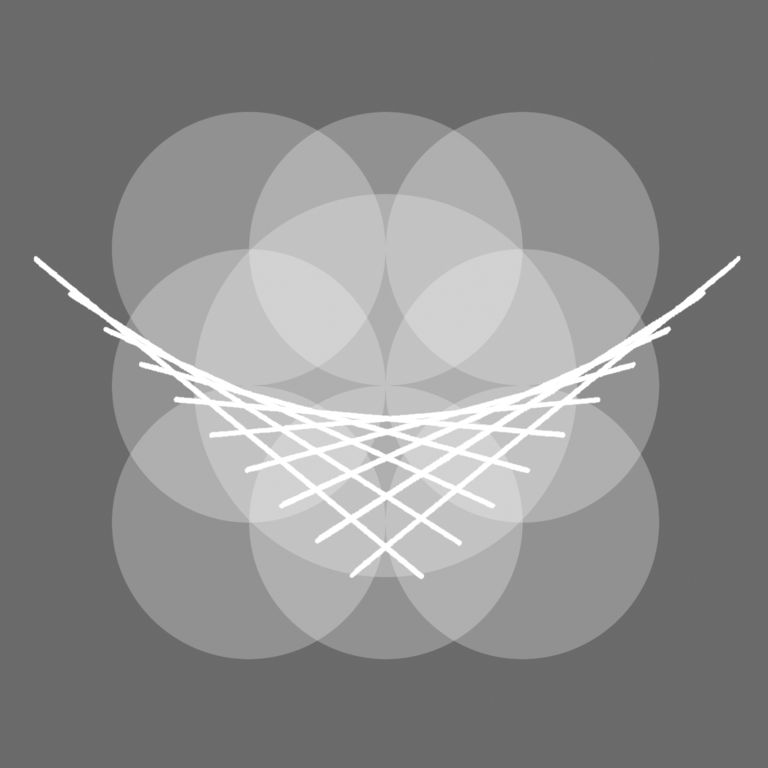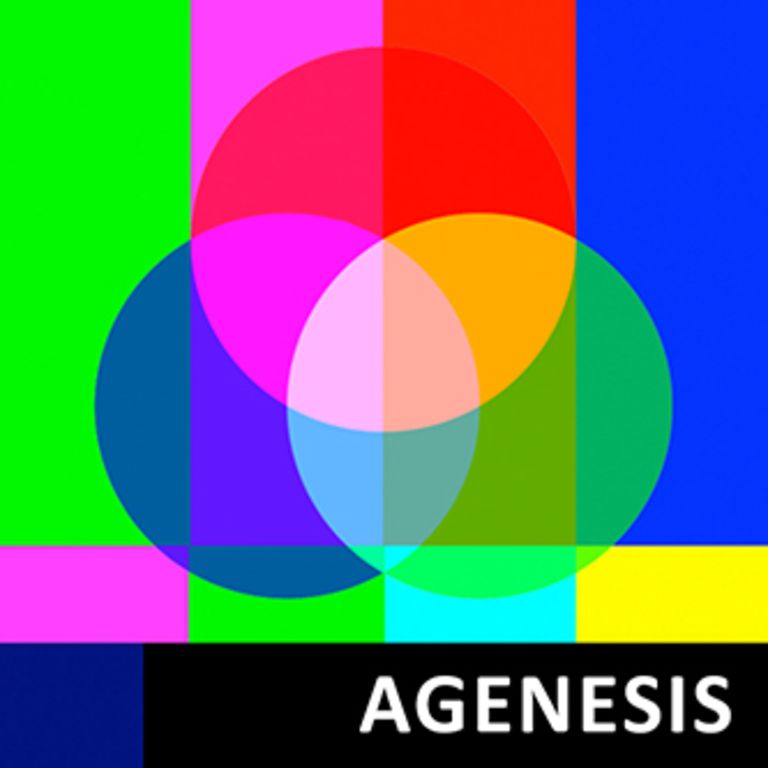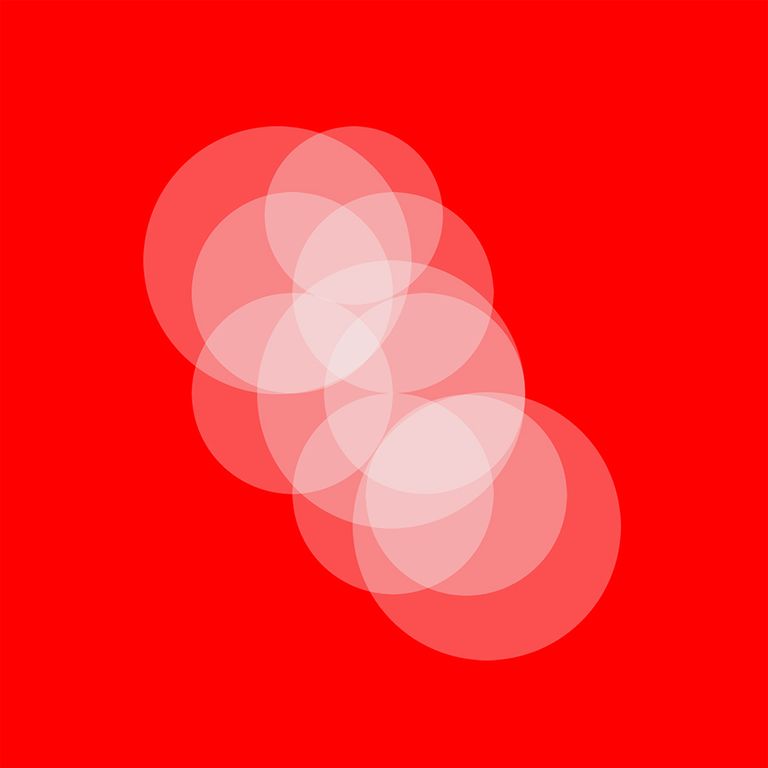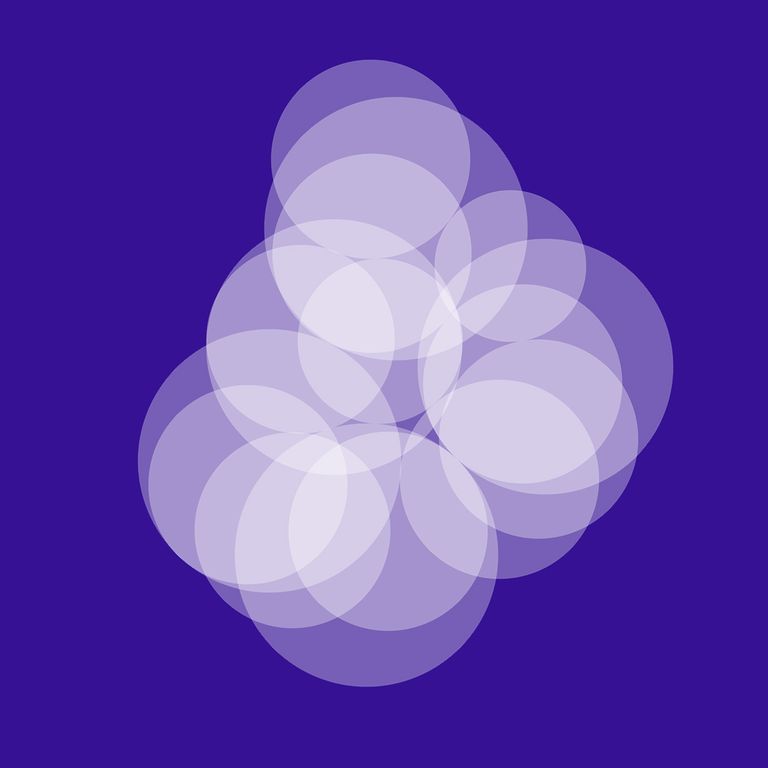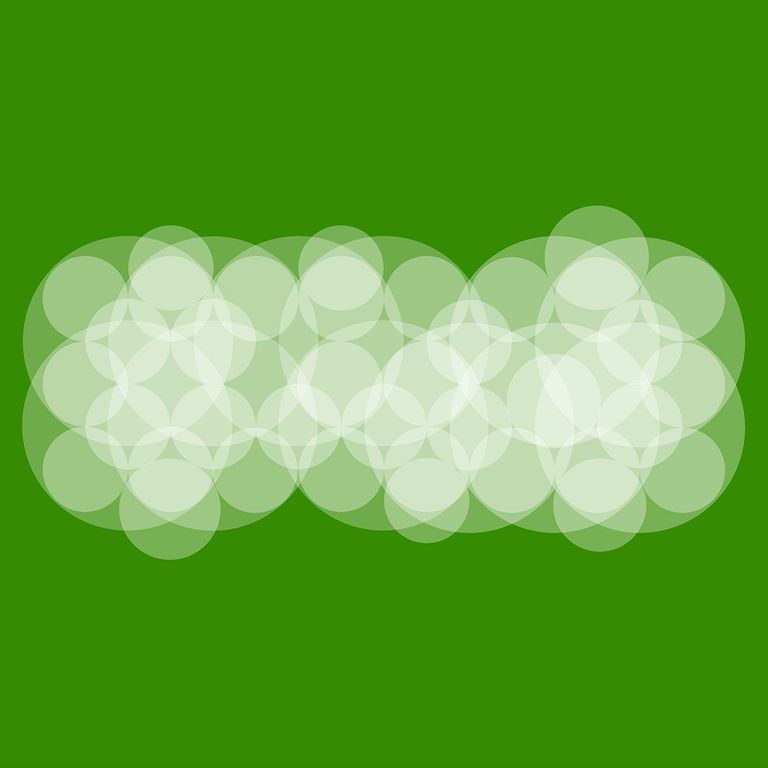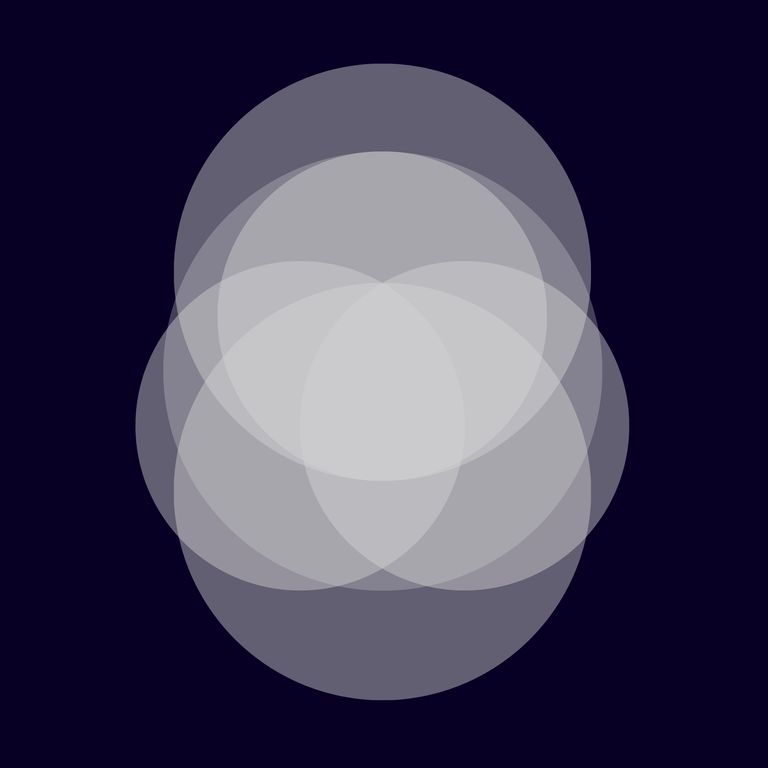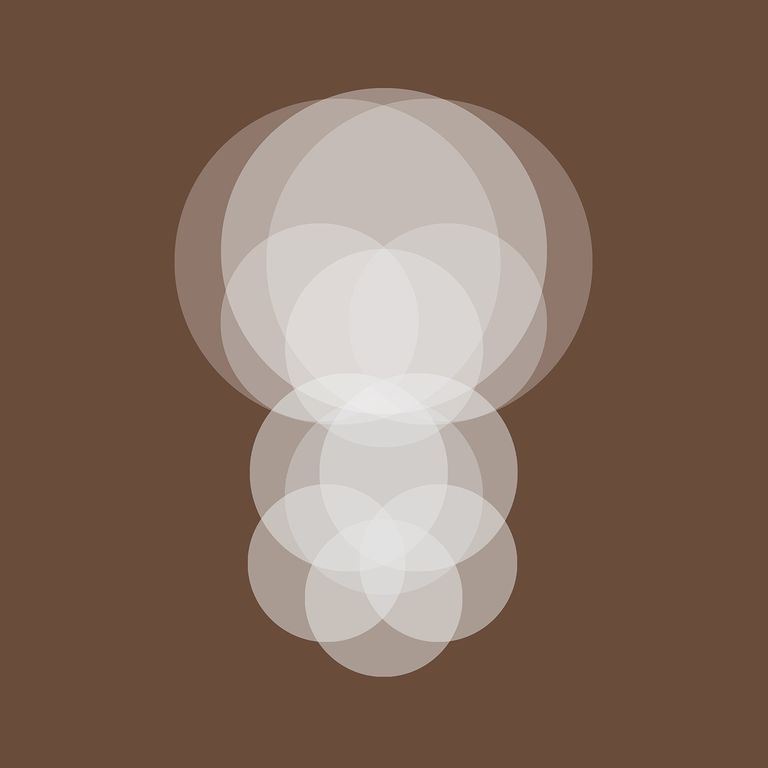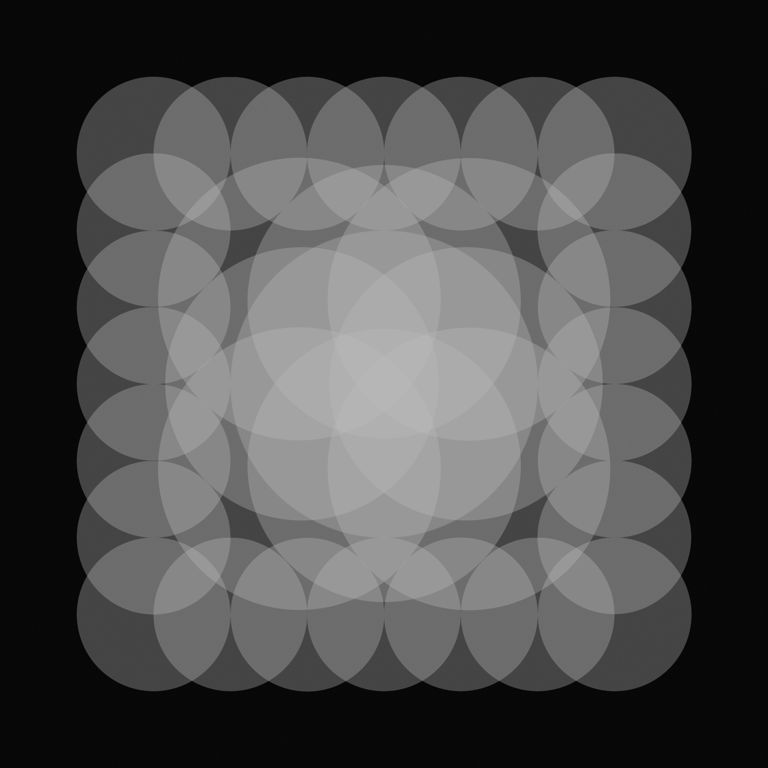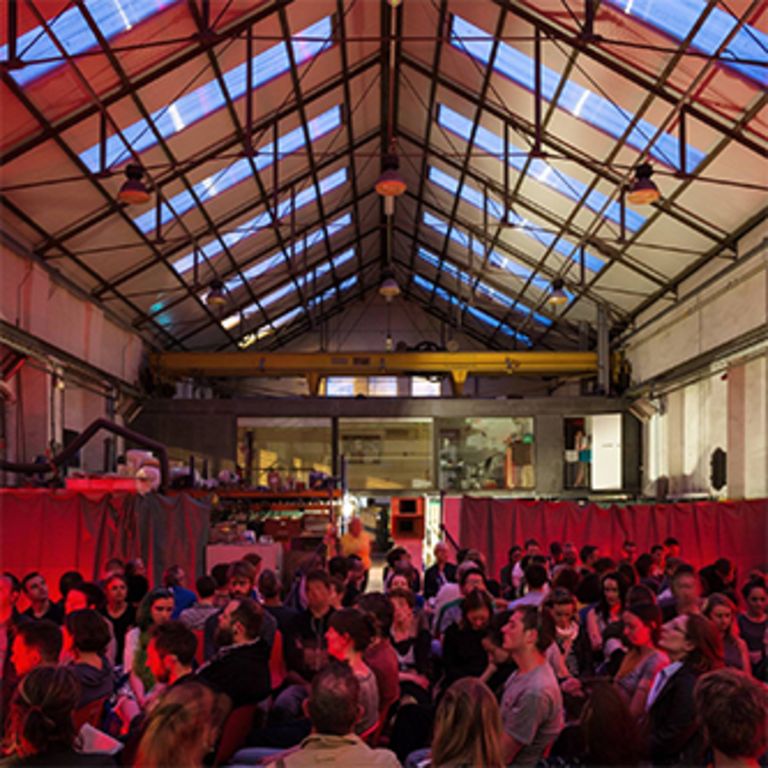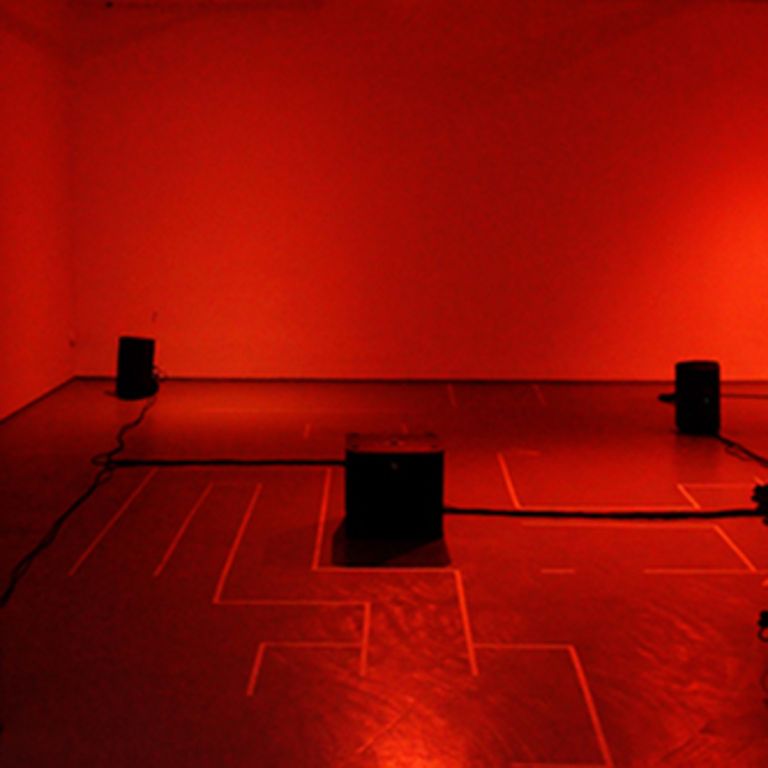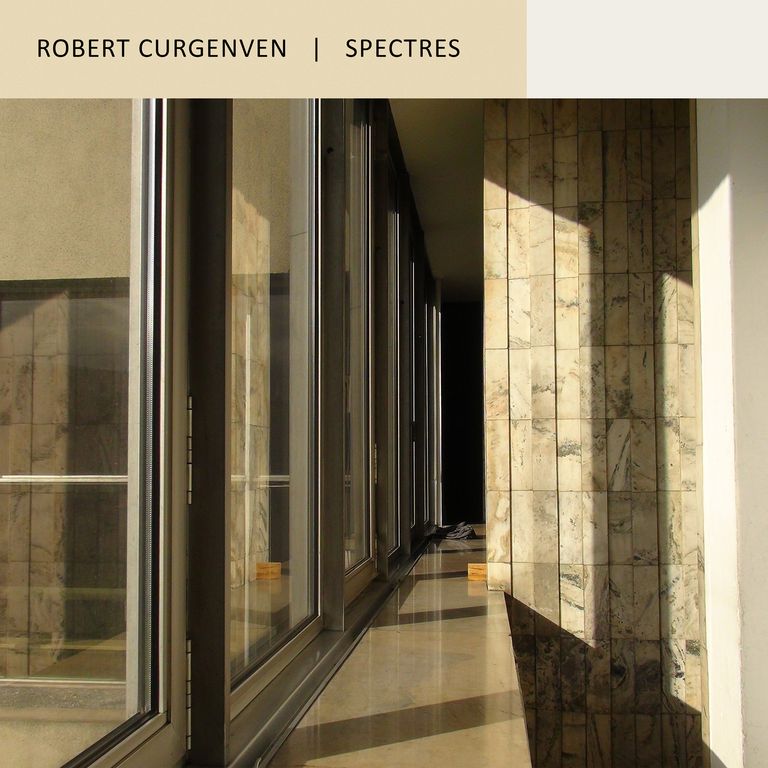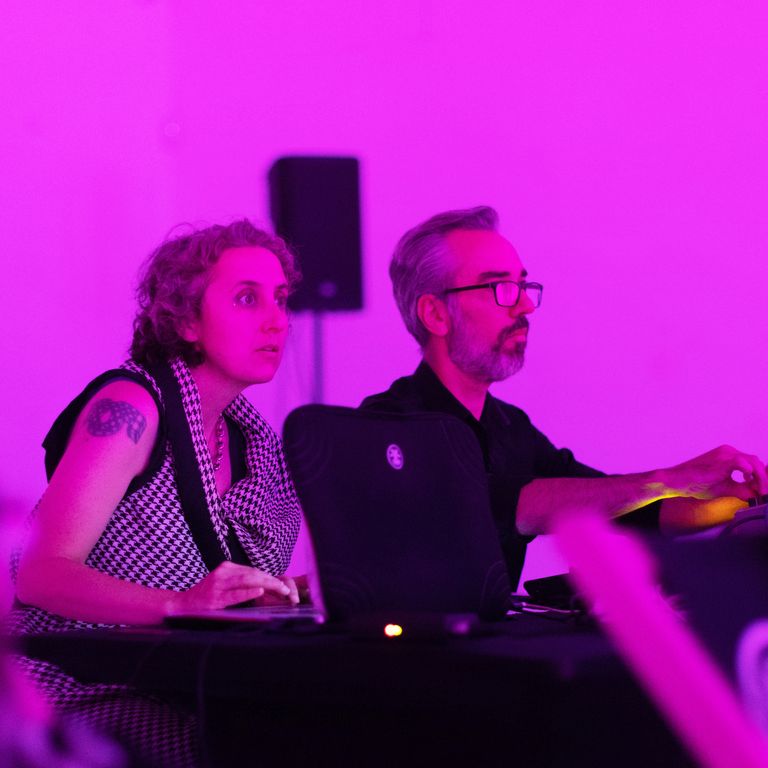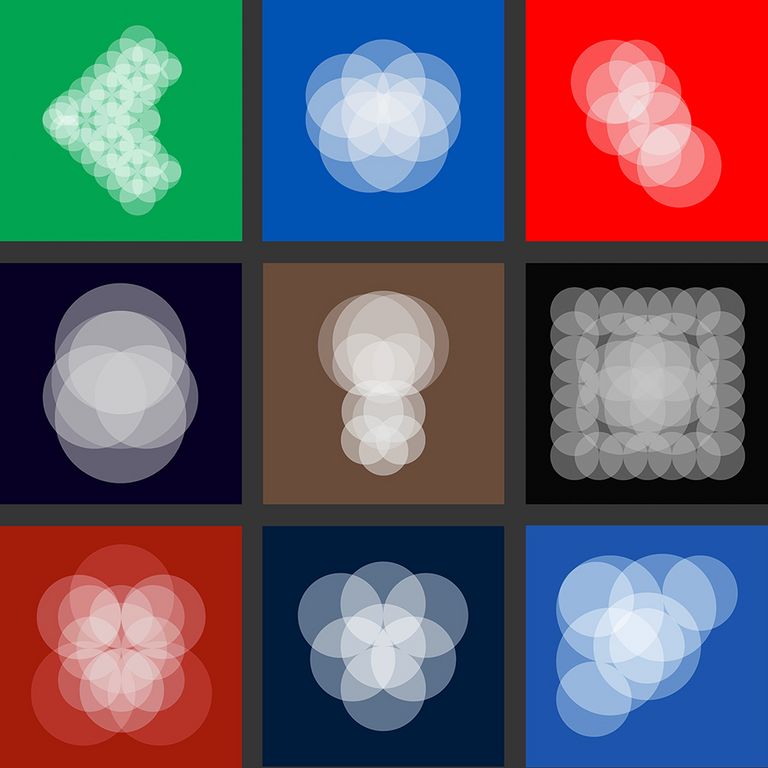
Image: individual "Open Form Pavilion of Air" works which are tesselated in an open public space to create the gesamt Pavilion Field audiowork - accessible via Echoes app
Duration variable.
Proposed location: Haus der Kulturen der Welt & surrounds / Tiergarten or Tempelhofer Feld
Specific installation area: approximately 9-12 hectares
Comprising works from the pan-European Open Form Pavilion of Air series (15 sites across 9 countries)
Launches & events with European festivals have included: Venice Biennale (IT), Vorspiel CTM/Transmediale Berlin (DE), New Music Dublin (IRL), Sounds from A Safe Harbour Festival (IRL), Struer Tracks (DK), Lofoten Art Open (NO) Open City Europe and the Open House London (UK), Open House Bergen (NO) & Open House Dublin (IRL) Festivals.
Read a PDF with further information
Try a private test version of Pavilion Field in Tempelhofer Feld. This test version comprises the London, Lublin, Lofoten, Berlevåg, Folldal and a section of the Dublin Open Form Pavilions of Air. It's easy to access, just:
1. Download the Echoes app
2. Grab a mobile phone & headphones
3. Download the audiowork in the app (not a browser) using the link https://explore.echoes.xyz/collections/8HyopHgm91Zyb6KT or QR code, download it to your phone & open while in Tempelhofer Feld.
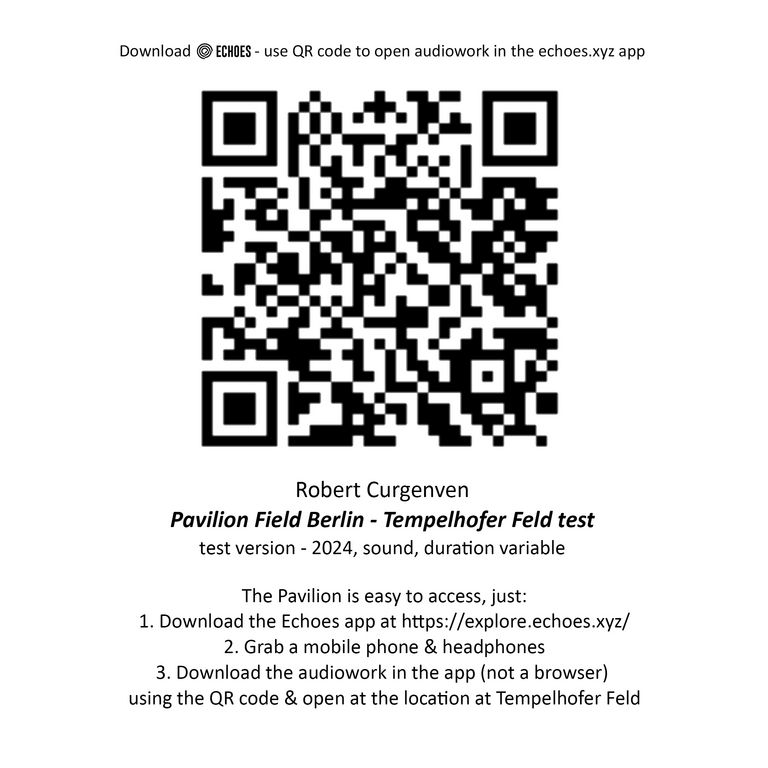
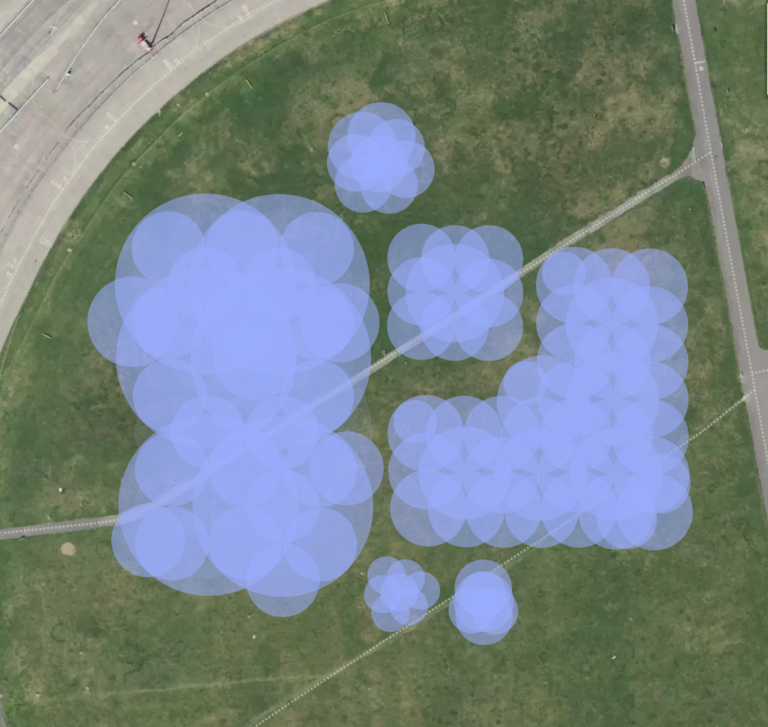
Area covered and works in test version - Tempelhofer Feld (audioworks from London, Lublin, Lofoten, Berlevåg, Folldal and a section of the Dublin Open Form Pavilions of Air)
An Open Form Pavilion of Air is a floating acoustic architecture, triggered by GPS and accessed via a smartphone, headphones and the echoes.xyz app. The Open Form Pavilion of Air series comprises 15 works developed over 18 months across 14 Euopean arts residencies in 9 countries. The Open Form Pavilion of Air series and its name draws on Polish architects Oskar & Zofia Hansen’s “Open Form” architecture and their work in post-war Poland developing social housing and a concomitant renewal of public space. The Open Form Pavilion of Air series offers a playful renewal and reframing of public space as an essential engagement for the community.
Pavilion Field Berlin is a tessellation of multiple audioworks from this Open Form Pavilion of Air series, fostering a direct connection to their locations across Europe, bringing together to one site for the first time works such as those created for Warsztaty Kultury (Lublin, PL), Folldal Kommune (NO), Sound Art Lab (Struer, DK), Piteå Science Park (SWE), Bergen Architecture School (NO), Kunstkvarteret Lofoten (NO), Kvitbrakka AIR Berlevåg (NO) and the 4.5hectare audiowork for Merrion Square/New Music Dublin (IRL). Each Open Form Pavilion of Air is in a unique tuning system, the many sounds comprising this structure have the effect for listeners of creating a modulation of the location and its context – an immersive, profoundly spatial and physical experience – together as a Field they present multiple adjacent experiences of Haus der Kulturen der Welt & surrounds or Tempelhofer Feld as possible sites for the Field. Pavilion Field has no visible presence outside the app and can only be accessed and enjoyed on-site.
Pavilion Field Berlin recalls the Hansens' unbuilt Pavilion of Music, "My Music, My Place" (Moje Miejsce, Moja Muzyka) for the Warsaw Autumn festival in 1958. The constellation of Pavilion audioworks forming Pavilion Field Berlin are enjoyed by walking through the different zones mapped throughout the site at Haus der Kulturen der Welt & surrounds / Tiergarten or Tempelhofer Feld while using your mobile phone, the Echoes app and headphones. You become a participatory listener producing a composition in real-time - your navigation creating a unique choreography via GPS, combining and changing sounds surrounding HKW or Tempelhofer Feld via the app. Hear the many layers of the vast, open metropolitan location and its context become transformed by the many sounds forming the Pavilion Field, revealing an immersive, profoundly spatial and physical experience.
Made from many overlapping zones ('echoes'), each Pavilion itself comprises a floating acoustic architecture. The 'shape' of the sound within each zone is derived from architectural roofing forms (like gables, hyperbolic paraboloids, mansard), together what they create is not a solid roof but a porous airborne concept, one that retains a stark physicality, letting in the elements and surrounding sound but also changing them - subtly reframing visitors' experience of HKW surrounds / Tempelhofer Feld's audiosphere. Each Pavilion uses its own unique tuning system, so each sounds different from one another and each having a different form. Traversing HKW's surrounds or Tempelhofer Feld will give a constantly shifting series of audio experiences specific to each Pavilion's sonic footprint, similar to walking through a series of adjacent Big Top marquees – together they describe a constellation of impossible architectures, a fantastical architectural canopy of sound.
Pavilion Field Berlin has the potential to present three new specially developed works which together cover over 2.5 hectares. Additionally the Berlin Open Form Pavilion of Air located on the Neue Nationalgalerie steps and forecourt (launched as part of Vorspiel Berlin 2023) would be reproduced in at the same size as the Miles van der Rohe designed gallery (65 m x 65m) - which is over four times the size of its Potsdamerstraße likeness.
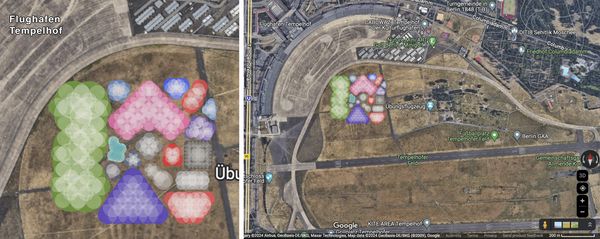
Mockup of potential Tempelhofer Feld site and arrangement of works across the Pavilion Field Berlin (including three new works) - each of the designs shown in the map/mockup is colour-coded to the individual Pavilion audioworks shown further down the page. Each circle is one (aforemention) "echo", a zone with a single architecturally-derived sound, with each design comprising from 7 (Berlevåg) to up to 49 (Dublin) echoes - the complete design comprising over 300 sounds across more than 17 individual audioworks.

Mockup of potential HKW & surrounds / Tiergarten site and arrangement of works across the Pavilion Field Berlin - each of the designs shown in the map/mockup is colour-coded to the individual Pavilion audioworks shown further down the page.
Pavilion Field Berlin as response to the Hansen’s Open Form theory and their Pavilion of Music for Warsaw Autumn 1958
Pavilion Field is formed from an array of individual geo-located audioworks from the Open Form Pavilion of Air series, the smallest being 40m x 40m, the largest being 4.5hectares, in additional to several new audioworks. The first audiowork in the series was developed and implemented in 2022 in Lublin at the Hansen-designed LSM (Lublin Housing Cooperative) estate. From this beginning the intentions underlying these audioworks, both individually and collectively, were rooted in Oskar & Zofia Hansen’s “Open Form” architectural concept. For visitors, the Pavilion audioworks facilitated an engagement with the site in a manner that summons “the experience of the background” (Hansen, 132)”, what Yurina Kodama summarises as “[situating] people in the foreground of the event.” This directly recollects Hansen’s description of the 1955 Izmir Pavilion with Lech Tomaszewski [image] and Sao Paolo Pavilion (1959) with Tomaszewski & Zofia Hansen [image] – and it is this same foregrounding of visitors experience against the Pavilion Field as background for whom the intention is to draw out nuances of the Pavlion Field site. Similarly the Pavilion Field Berlin recalls the Warsaw Autumn Pavilion of Music’s striving, in Kodama’s words “to visualize the spatiality of music, creating conditions for wandering devoid of boundaries that evoked synesthetic audio-visual experiences.”
In David Crowley’s publication accompanying the exhibition “Sounding the Body Electric” (subtitled ‘Experiments in art and music in Eastern Europe 1957–1984’, Lodz 2012) he commented that Hansen argued “open forms had the potential to remind audiences of the fact of their own embodied being …[and] make the individual more attuned to the ordinary… [requiring] the creativity or participation of viewers or users”. He further remarked that “My Place, My Music (Moje Miejsce, Moja Muzyka) … experimented with the ‘spatiality of music’ – what [Hansen] called an ‘audiovisual space-time’ … the spatial relativity of the music’s reception brought the listener closer to an intimate experience of it … integrating sound with the listeners’ movements as well as with the trees and clouds’. Hansen’s aim was not the stimulation of sensation but of the imagination.”
In “Urban Sound Design Process” Caroline Claus observed that Hansen’s “My Place, My Music” was influenced by Hansen’s experience of a Xennakis piece that year – this mirrors how the hyperbolic paraboloids in the Open Form Pavilion of Air audioworks take inspiration from Hansen’s roofs in the service areas of the Lublin Housing Cooperative, which in turn parallel Xennakis’ hyperbolic paraboloids in the 1958 Philips Pavilion in Brussels that are themselves then connected to his realization of this architectural music as the opening section of Metastases.
Hansen’s desire with the Warsaw Autumn pavilion was to encourage visitors to (in Claus’ paraphrasing of Crowley) “move through the space, listening to the music with a heightened awareness of the natural setting beyond it”, echoing the way in which the Pavilion Field’s composite elements, each individual Open Form Pavilion of Air, strive to inculcate in visitors a similar awareness: that between their different tunings and spatial forms they collectively foster what could be termed as an ‘awareness of this awareness’ and its mutability - how it can change with even the smallest environmental modulations - beyond the aleatoric, events reveal context. Every experience for visitors to Pavilion Field is unique, no two users or engagements with the artwork and the spatial process is the same or repeatable. Thus, like the 1958 Warsaw Autumn pavilion, the Pavilion Field’s engendering of, in Crowley’s aforementioned words, “the spatial relativity of the music’s reception” and “stimulation not of sensation but the imagination” – acts to extend these concepts to the Pavilion Field and its’ constituent audioworks: the cold, abstract nature of the sine-tones and the architectural forms and shapes which the sounds’ individually and collectively describe for listeners as they traverse and process across the Pavilion Field, this choice of sound aims to achieve also this abstraction of sensation towards the liberation of the collective listeners’ imagination whilst also, crucially, deploying a psychoacoustic transformation of the contextual sounds underlying the location through the constant modulation of their processual beating frequencies.
Approaches underlying the Hansens' Pavilions using the logos of 'Open Form' architecture:
The Open Form Pavilion of Air audioworks parallel Hansen’s move to use the designs for the international fair pavilions as, in Krzysztof Kosciuczuk words in Frieze magazine “testing ground for designs that shifted focus from the object to ‘cognitive space’: to the individuals using them” – the modulation of the individual’s perception by the Open Form Pavilion of Air occurs at a variety of levels, among them the individual’s experience and apprehension of “space” i.e. location around them and its context.
Equally, as a spatial choreography through which listeners each move through on their own paths to compose their own piece through this movement, the Open Form Pavilion of Air echoes Oskar & Zofia Hansen’s pavilion for the 1958 Warsaw Autumn Music Festival which, Aleksandra Kedziorek observes "were not only meant to expose the displayed products (or music in the case of the latter), but also turn the visitors into active participants and co-creators of their spatial experiences”. In the case of the Open Form Pavilion of Air the displayed content is the site over which the invisible roof rests without the material support of walls, only sound, air and imagination…
Furthermore, as Hansen commented during the Team 10 meetings in 1960 (as reported by Kedziorek) “Open Form has the task of helping the individual find himself amid the collective, to make himself indispensable in the formation of his own environment,” – the Open Form Pavilion of Air aims to allow, produce or effect a realization within the individual that reframes their engagement with the location, the site and thereby society-at-large. Hansen continues that, “it would seem that society should facilitate (and not impose, as Closed Form does) the development of the individual. There needs to be a synthesis between the objective, collective, social elements, and the subjective, individual elements.” Similarly the individual sound elements of the Open Form Pavilion of Air combine and are combined by the listener’s movement to produce a gestalt effect that facilitates this shift in site-perception.
A complete primer on the Open Form Pavilion of Air series & information on Dublin Pavilion via RTÉ Culture
https://www.rte.ie/culture/2023/0327/1366079-new-music-dublin-welcomes-you-to-the-open-form-pavilion-of-air/
RTÉ (the Irish national broadcaster) also broadcast this short radio feature within the Dublin Open Form Pavilion of Air (listen at this link) It notably highlights that the experience is a reflection of the listener's embodiment and how they move through the geographical location of the GPS-locked audiowork and also the context of the location. While the quality of the listening is itself quite a disembodied experience, the experience of the audiowork does address the listener back into the space in which they are listening, in this case somewhere like Tiergarten or Tempelhofer Feld in Berlin. The tessellation of different works across the Field gives a range of potential experiences, adjacent to one another, which each act to reframe listeners engagement with that site. While the sound can be slightly disorienting and unusual, this disorientation creates a reorienting for the listener in the place, to lose yourself to find yourself.
Additionally this interview with John Schaefer for New Sounds #4765 on WNYC (USA) covers the Dublin Open Air Pavilion of Air and new pipe organ work created for New Music Dublin festival.
New Music Dublin commissioned a composition comprising tracker-action pipe organ and electronic elements from the Open Form Pavilion of Air series. This piece was performed live by Curgenven for the New Music Dublin 2023 Festival, details here.
INDIVIDUAL SITES IN THE 'OPEN FORM PAVILION OF AIR' SERIES:
Project background in previous sound/architectural works:
Open Form Pavilion of Air follows on from these previous selected architectural works:
- Climata (2015): recorded entirely in 15 of James Turrell’s skyspaces in 9 countries where each Skyspace was briefly transformed from an architectural light installation into a sound installation where you can hear the air move.
Climata was realized as an:
- SPECTRES (2019/20) - composed entirely of in-situ recordings with tone generators in 9 post-Communist architectures, it presents an interrogation of contemporary society across the threshold of the architecture from a former, but recent, epoch. SPECTRES was realized as an:
- Threshold Works No 17 (2021/22) – is a single 40minute multichannel work commissioned by the National Museum in Krakow (MNK) and permanent MNK collection acquisition. The work is presented as the entrance sound installation for MNK's permanent exhibition ‘Sections: Gallery of Polish architecture of the 20th and 21st centuries’ ('Przekroje: Galeria Architektury Polskiej XX i XXI Wieku'). The installation was made using the resonances of the architecture of the bulidings of several branches of the MNK's buildings as a threshold, filter and frame for the city of Krakow, Watch an interview (in English and Polish) recorded at MNK's Hotel Cracovia branch about the project here.

